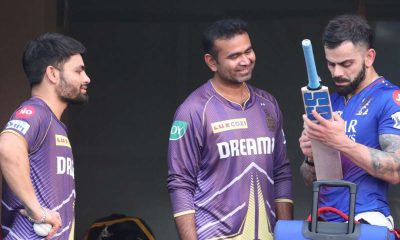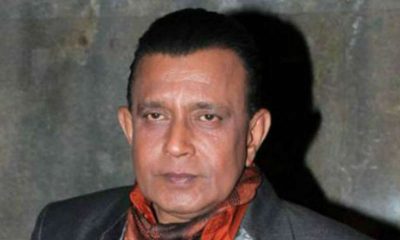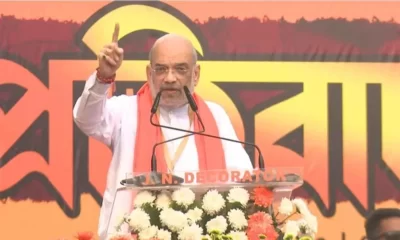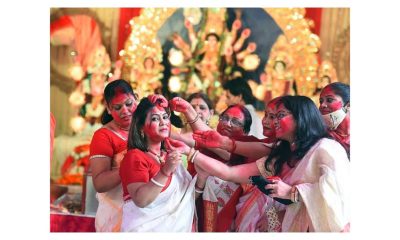Latest Art & Culture
Preserving the Past: The Surviving Legacy of British Architecture in Kolkata
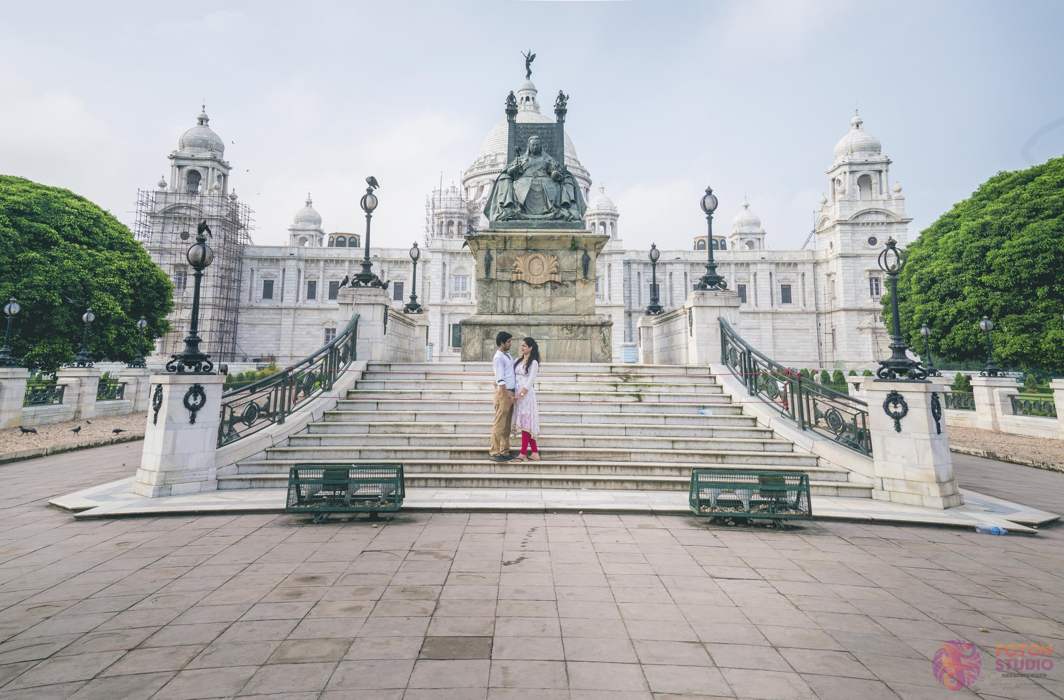
~By Denis D. Gray (Associated Press)
The British left footprints across their far-flung colonial empire from Toronto to Yangon. But nowhere is there as vast and varied a collection of heritage architecture than in Kolkata.
Thousands of buildings — including homes, churches, palaces and even synagogues — survive here from the days of the Raj, when Britain ruled India.
This marvelously exuberant, maddeningly chaotic city began as a small trading post in the 1690s, rose to become the seat of British power and now ranks as India’s third largest city, a megalopolis of some 15 million people.
Unlike countries which opted to eradicate the physical legacies of colonialism, India has accepted them as witnesses to history. The prime eradicator of Kolkata’s past has not been politics but those whom preservationists call “land sharks,” developers against whom they wage a sometimes winning, sometimes losing battle.
To dip into Kolkata’s bygone era, my wife and I stayed at the Oberoi Grand Hotel, took afternoon tea at the still oh-so-English Bengal Club and best of all signed up for a guided walk around Dalhousie Square, the onetime epicenter of the British Raj.
Dating back to the late 1880s, the Grande Dame of Calcutta, as the Oberoi and Kolkata were earlier known, was the social hub of the colonial city. During World War II, it was party time headquarters for American soldiers. Today the hotel is an oasis of tranquility amid the surrounding vibrant street life, offering palm-shaded courtyards, Victorian four-poster beds and service which viceroys would find hard to fault.
The Bengal Club, another enduring social fixture, has been catering to elites since 1827, and the lovely premise strives to keep the modern world at bay. One may forget it is 2018 while sipping tea in a politely hushed room named after the prominent 18th century British painter Joshua Reynolds, one of whose works hangs on its pastel yellow walls. The colonials also tried to shut out a dramatically changing India: Incredibly, the club only opened its doors to Indians in 1959 — 12 years after independence was won.
“‘It was from here that 200 British officers ruled over 200 million Indians,” remarked our guide Ramanuj Ghosh, pointing to what is now the 133-room home of the state governor, where British viceroys resided during most of the decades when Kolkata served as India’s capital. Modeled on a stately home in England, it was encased in 6 acres of lush gardens and built in the Gregorian style.
What soon became obvious on our walk, even to an untrained eye, was the incredible architectural melange. The Victoria Memorial, the city’s most imposing colonial structure, is described as designed in “the Indo-Saracenic revivalist style which uses a mixture of British and Moghul elements with Venetian, Egyptian, Decanni and Islamic architectural influences.” Dedicated to the memory of Queen Victoria, its vast art and artifact collections include her childhood piano and a writing desk.
Our four-hour stroll through several centuries of history took us past the 1868 post office and the Royal Insurance Building, still busy today, where British officials would ride their horses right up to their desks. At the vast Writer’s Building, India’s still notorious bureaucracy administered a population which also included Greeks, the Dutch, Armenians and others.
Kolkata once was also home to some 6,000 Jews, though there are just a handful living here today descended from the Jews who settled here in the late 18th and early 19th centuries. The city’s oldest, now restored synagogue Neveh Shalome dates back to 1831.
Most of the buildings we saw are about on a protected heritage list. But many others are decaying or have been razed.
“Indian people want to preserve the past. We don’t easily make way for the new, but powerful market forces are working against this,” says Bonani Kakkar, who heads People United for Better Living in Calcutta, an environmental and preservation group.
Developers, she says, approach owners of dilapidated homes, offer them new condos in exchange and then take them down to build high-rises. The solution, she believes, is to either “make people boast that they live in old buildings” or to bring them to life again by turning them into B&Bs, art galleries and music venues.
Philip Davies, an authority on colonial architecture, notes that there are more heritage buildings in this city than all of the United States, but that Kolkata is a “sleeping giant at the crossroads.”
“It is stumbling toward the future rather than grasping the spectacular opportunities afforded by its heritage,” he said. “Its unparalleled heritage is crumbling from neglect, and falling prey to random, speculative development.” But he hopes a brave new vision will save one of the world’s great historic cities.
Entertainment
Yashraj Mukhate collaborates with Amit Trivedi for Mann Dhaaga song
In a post circulating on Instagram Yashraj Mukhate talks about his experience of listening to Amit Trivedi’s music and recalls how he had always dreamt of collaborating with Amit Trivedi. He said his dream came true 2 years later in 2024 where he collaborated with Trivedi on the song Mann Dhaaga.
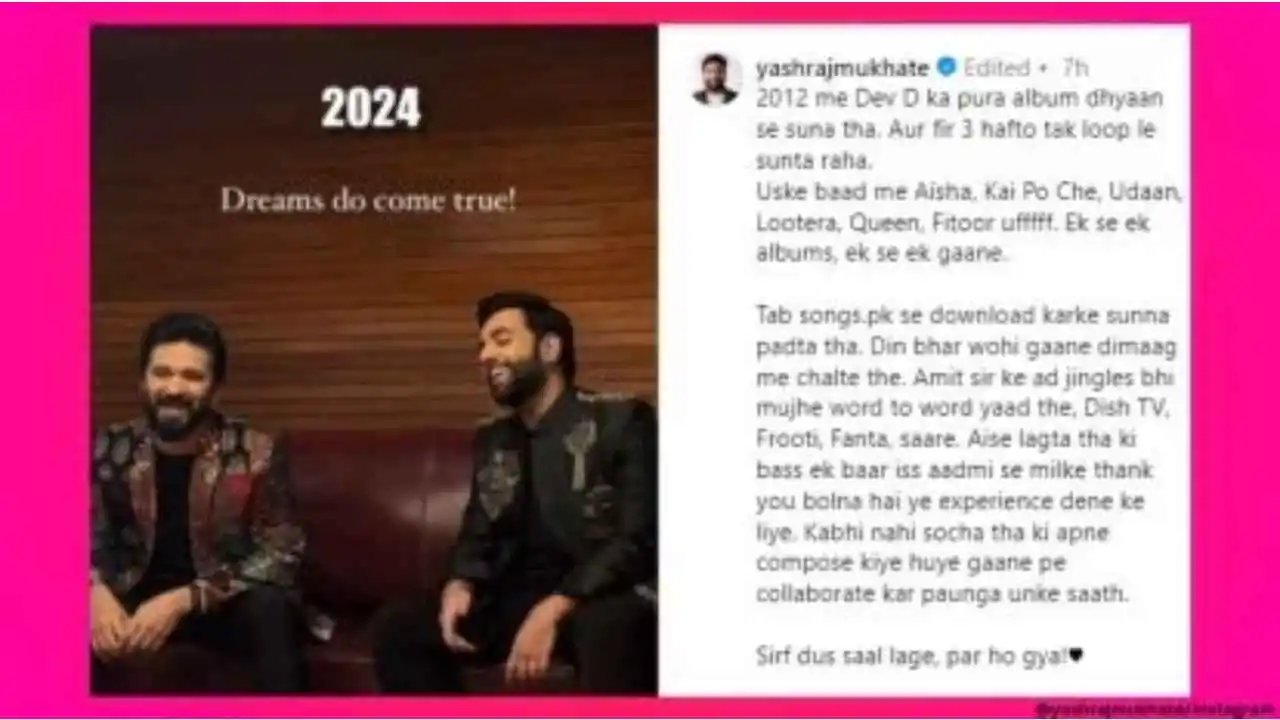
Amit Trivedi is known for his soulful compositions which weave profound lyrics, captivating music lovers. His songs spark a deep desire in aspiring artists to collaborate with him. Music producer and You Tuber Yashraj Mukhate had immense admiration for Trivedi’s artistry. In a post circulating on Instagram Yashraj Mukhate talks about his experience of listening to Amit Trivedi’s music and recalls how he had always dreamt of collaborating with Amit Trivedi.
He said his dream came true 2 years later in 2024 where he collaborated with Trivedi on the song Mann Dhaaga. He wrote that he had been listening to the entire Dev D Album carefully in 2012. And he kept listening to it on loop for 3 weeks. He continued to listen to Amit Trivedi compositions in Aisha, Kai Po Che, Udaan, Lootera, Queen, Fitoor continuously. He said he could not stop himself and became a big fan of the music director. He said he started dreaming of meeting his idol one day and collaborating with him.
He recalled that he had to download songs from songs.pk and listen to them. He said the songs kept running inside his mind all through the day. He added that he even remembered Amit Trivedi’s ad jingles word for Fanta, Frooti, Dish TV and all of them.
Mukhate said he always dreamed of meeting Amit Trivedi and wanted to thank him for giving this experience. The post has gone viral on social media with 96,445 likes till now. Large number of social media user commented on the social media post where one user Parth said the Yashraj Mukhate was truly an inspiration. One user said his dedication had brought him to level. One user said a man should make all his dreams come true by going through one hustle at a time.
Book reviews
The Sattvik Kitchen review: Relook at ancient food practices in modern times
If you are the one looking to embrace healthy food habits without compromising on modern delicacies, then this book is a must read!
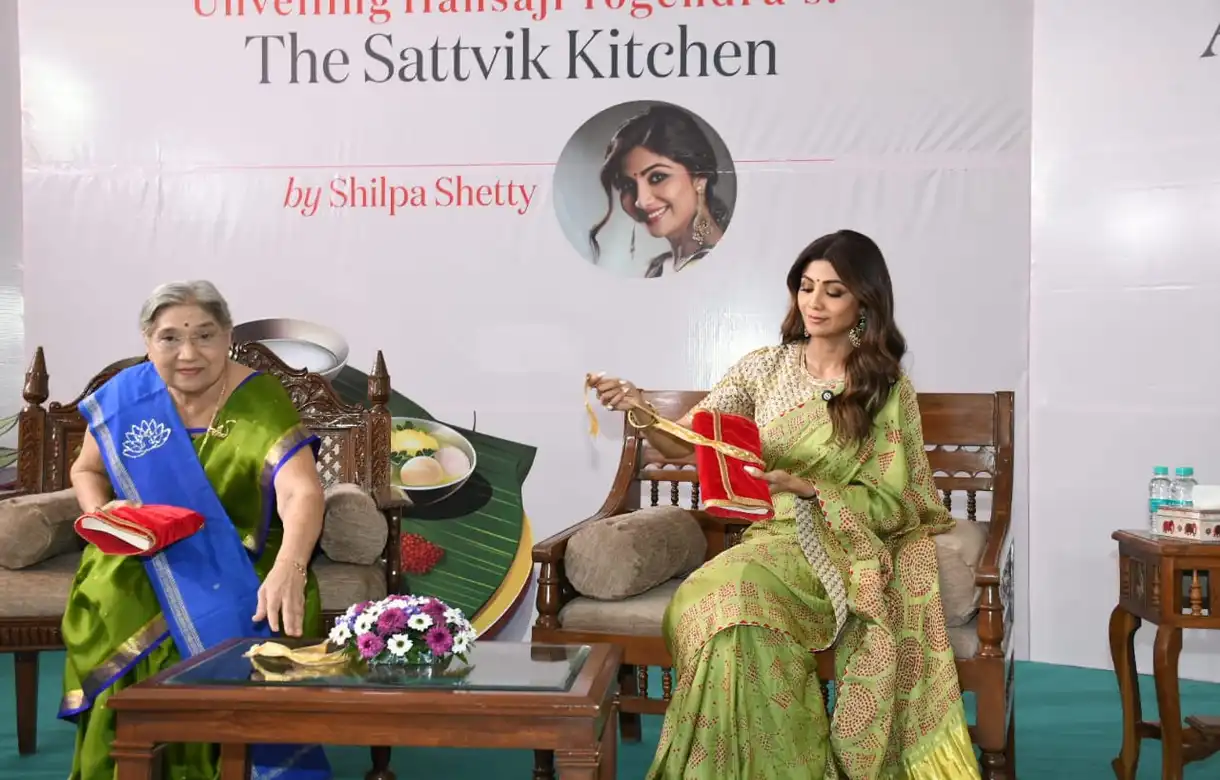
The cacophony of bizarre food combinations across the streets of India has almost taken over the concept of healthy food practices. Amid this, yoga guru Dr Hansaji Yogendra’s The Sattvik Kitchen, published by Rupa, is a forthright work that takes you back to ancient food practices and Ayurveda.
As the subtitle reads, The Art and Science of Healthy Living, the book endows a holistic approach to ayurvedic diet along with modern evidence based nutrition. From Basil-Broccoli Soup to Sprouted Green Gram Salad and Strawberry Oats Smoothie to Mixed Dal Parathas, the book not only provides you with the recipes but also stresses on healthy cooking tips together with nutritional benefits.
Besides, Dr Hansaji Yogendra’s book emphasizes on the traditional methods of food preparation and the advantages of using traditional cookwares like iron and copper vessels. The narrative portrays a balanced approach, knitting traditional wisdom with contemporary scientific understanding.
The author, through her book, sheds light on the principles of Ayurveda and highlights the metamorphic potential of adopting ancient food practices. She explains how our body reacts to food in terms of timing, quantity, manner of consumption and seasonal considerations. The book adeptly reintroduces ancient home remedies tailored to address various contemporary health issues.
Dr Yogendra, in her book, decodes the importance of nutritional knowledge to optimize both immediate and long-term health outcomes. It provides deep insights to understanding the intricate relationship between food choices and overall well-being, weaving Ayurveda with practical perception.
The book not only celebrates food philosophy but also offers a practical view into weight loss, well-being, and the profound impact of dietary choices on both physical and emotional aspects of our lives.
If you are the one looking to embrace healthy food habits without compromising on modern delicacies, then this book is a must read! The book is a roadmap to navigate the challenges of the modern day kitchens.
Book reviews
The Deccan Powerplay review: Bashing Chandrababu Naidu and his legacy
Amar Devulapalli’s book The Deccan Powerplay cornersthe TDP strongman with every petty incident exaggerated a la Baahubali

Mike Marqusee’s War Minus The Shooting is a seminal book on cricket and its influence on culture and politics in the Indian sub-continent during the 1996 Cricket World Cup. Amar Devulapalli’s book The Deccan Powerplay, published by Rupa, sounds like a similar exercise with its clear subtitle, “Reddy, Naidu and the Realpolitik of Andhra Pradesh“. The ambitious sounding subtitle crumbles under the weight of belied expectations of a scholarly treatise on the political interplay between the Reddys, the Kammas and the erstwhile united Andhra Pradesh. One can blame it on one’s own hopes and excuse the author of the lapse since the book has just three people to discuss: YS Rajsekhara Reddy, N. Chandrababu Naidu and Y.S. Jagan Mohan Reddy.
The chief protagonists here are YSR and his son, the incumbent Chief Minister of bifurcated Andhra Pradesh, Jagan Mohan Reddy. The lone villain, and one crafty as a fox if ever there was one, is Chandrababu Naidu. The book devotes a chapter to the corruption cases against Naidu, for which he was arrested in September 2023.
In crafting the narrative, the other heavyweights of Telugu country are discussed in passing, as peripheral players. N.T. Rama Rao does get the starring role, as befits the Telugu star of yesteryear and the founder of the Telugu Desam Party. But even this is fleeting. The Congress, which ruled the state till bifurcation, is portrayed as a faction-infested animal — so what if YSR stayed in the party both as loyal soldier as well as a seasoned yet dynamic general?
The book sets out to demolish the halo surrounding Naidu as the man who brought Information Technology majors to Hyderabad, nay Cyberabad, by beating Bengaluru. His breaking with NTR is depicted as a shrewd, calculated gambit to displace the TDP founder, who was also his father-in-law.
The book is replete with this and more Naidu nitpicking. Naidu took no bullshit from politicians or journalists. He gave it back to the scribes when needed, apart from his favourite media groups, one of the reasons they were not very happy kowtowing to him,
as the book suggests. Instead they would make ostentatious bows to any political alternative merely for being less brusque than the now-out-on-bail former CM.
The book picks apart every claim Naidu ever made and portrays him as an opportunist. The problem with this is possibly because Naidu preceded Jagan Mohan as the rump AP’s last CM and had presumably used every trick in his arsenal to discredit the younger contender.
With Assembly elections due this year, this book reads like a party pamphlet and comes across as a political weapon among the undiscerning. An Instagram handle could have been more useful to this end. But for such a grandly-titled book: the anticlimax is swift and painful.
-

 Cricket news24 hours ago
Cricket news24 hours agoTelugu superstar Mahesh Babu meets SRH captain Pat Cummins, says it is an absolute honour
-
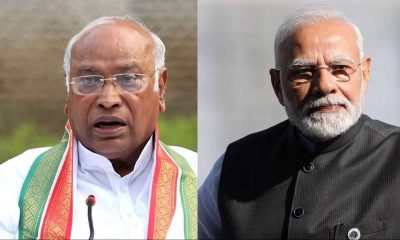
 2024 Lok Sabha Elections24 hours ago
2024 Lok Sabha Elections24 hours agoMallikarjun Kharge writes to PM Modi seeks time to explain Congress’s Nyay Patra
-

 Trending23 hours ago
Trending23 hours agoSocial media user shares video of Air India ground staff throwing expensive musical instruments, video goes viral
-
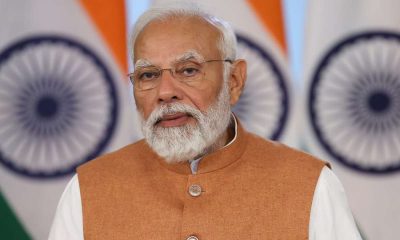
 2024 Lok Sabha Elections7 hours ago
2024 Lok Sabha Elections7 hours agoPM Modi calls for high voter turnout in second phase of Lok Sabha elections 2024, says your vote is your voice
-
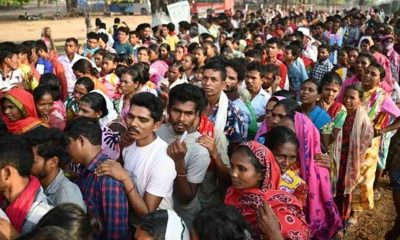
 2024 Lok Sabha Elections2 hours ago
2024 Lok Sabha Elections2 hours agoLok Sabha election 2024: Nearly 50% voter turnout recorded in second phase till 3 pm
-
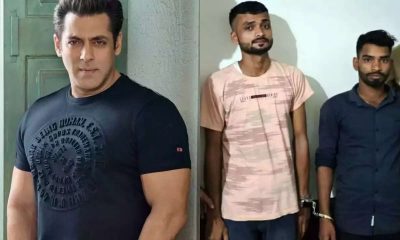
 India News6 hours ago
India News6 hours agoSalman Khan house firing case: NIA interrogates arrested shooters Sagar Pal, Vicky Gupta for three hours
-
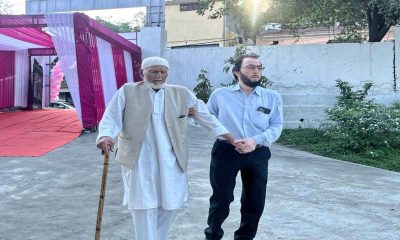
 2024 Lok Sabha Elections5 hours ago
2024 Lok Sabha Elections5 hours agoLok Sabha elections 2024: 102-year-old man walks to polling booth to cast his vote in Jammu

